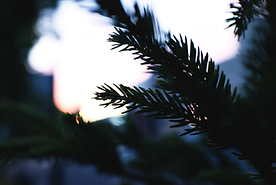D


Hanging Wisteria Pergola
(Fujidana)
Japanese Elm
(Harunire)
Image of Pioneering
“Image of Pioneering” towers high above the centre of the intersection of Kaimono Shopping Park and Ryokudo as if aiming for a place beyond the sky. This tower was created by a sculptor from Aibetsu named Nakai Nobuya in the year Showa 42 (1967). On the main tower, which is made of iron, we can see the symbolic arrangement of pioneers and their tools woven from this element of nature. This dark brown tower, which incorporates the remnants of the pioneering era, conveys the thoughts of the pioneers who once worked themselves to the bone to develop this land.
Red Spruce (Akaezomatsu)
.png)
The Red Spruce is adored as a natural Christmas tree. During the season when the landscape is coated in white, it magnificently watches over the faces of smiling children. Among Ainu people, it is called the “Goddess Tree” or the “Goddess of the Forest”, extolling the beauty of its form. The essential oil collected from this beautiful tree is an invitation to the verdant and luxuriant forest. Its enchanting, natural aroma heals both the body and the mind.
Japanese Yew (Ichii)

The Ainu word for the Japanese yew, “Kuneni”, means “Tree used for bows”. As the name suggests, the Ainu people would choose branches with a gentle curve, to make strong, flexible bows. These bows were actually used for hunting along with arrows made from Onigaya (Japanese plum yew), bamboo and animal bones. Also, at the beginning of autumn in the North, the Japanese yew bears crimson fruit which has the appearance of a small round lamp affectionately called “Onco fruit.”
Hanging Wisteria Pergola (Fujidana)

In autumn, the Wisteria is soft and fluffy, but in April and May, the tufts clad in light purple petals bloom profusely as if they were a meteor shower falling through the night sky. In Japan, there are Wisteria trees which are over 1000 years old, living for what seems like an eternity. A vitality that easily surpasses our own lifespans is concealed within the elegant Wisteria and its fantastic spectacle leads our thoughts to our own fragile lives which are as fleeting as the twinkle of a shooting star.
Ouba Lily

The Oubayuri Lily bravely blooms in all directions, and yet conveys a feeling of sorrow. There is a reason for this as it takes approximately ten years for the Oubayuri to grow from a seed into a flower. When it finally blooms in early summer, its splendid beauty only lasts for a moment before faintly withering away and disappearing. The radiance of this momentary twinkle softly whispers and shows us the true nature of the Hokkaido summer, which vanishes in a fleeting instant.
Monument to the Handmade-Hometown prize

The Handmade-Hometown prize is awarded to applicants from across the country whose efforts to improve their town/region have been deemed to be excellent. This award was given to Seventh Avenue Ryokudo in the year Showa 63 (1988). The reason being, people walking along the street can be enveloped on both sides by greenery, and the colorful illumination in the darkness after sunset gives a sense of “peace and richness”, bringing with it familiarity, and thus it was recognized as an excellent walking path.
Ezo Hydrangea (Ezoajisai)

The Ezo Hydrangea is composed of small, round hermaphroditic flowers and ornamental flowers with numerous light bluish-purple petals, which form colourful pairs and depict its delicate nature. Its figure, which unfolds in the cool morning before basking in the sunlight, is soft and carefree, making one imagine a clear pale blue sky, as it seems to soak through the eyes, bringing cool wind to the heart on a hot summer’s day and providing gentle comfort.
Amur Cork Tree (Kihada)

The inside of the Amur Cork’s bark is tinged with a characteristic vivid yellow colour. Once dried, this yellow bark was highly valued for its uses as a dye and as a natural medicine, which had the effect of protecting one’s digestive system. The leaves, which are pleasing to both the eyes and the body, are preferred as a source of nourishment by the larvae of the Chinese peacock butterfly and the Alpine Black Swallowtail butterfly, so they can mature into adults with wings that glamorously reflect the rays of the sun.
Japanese Elm (Harunire)

The Japanese Elm is a tree that grows slowly, similar to humans. As it matures slowly, it grows into a safe and sturdy tree. It grows tall while communicating thoughts and feelings with people who live close by, lives together with our memories, and protects us from wind, rain and the sun’s harsh rays. The towering Japanese Elm projects a deep kindness and announces the arrival of spring with the blooming of its many faint red flowers.
執筆:佐々木祐輔 (Sasaki Yusuke)
<参考文献 (Bibliography)
□植物
福岡 イト子、 佐藤 寿子『アイヌ植物誌』草風館 (1995)
「アイヌと自然デジタル図鑑」<http://www.ainu-museum.or.jp/siror/index.html>
「アイヌ生活文化再現マニュアル 熊の霊送り【道具編】イオマンテ」財団法人アイヌ文化振興・研究推進機構(2003)<https://www.frpac.or.jp/manual/files/2003_08.pdf>
□彫刻
『あさひかわの彫刻』旭川市教育委員会 (1987)
『あさひかわの彫刻』旭川市教育委員会 (1992)
中原悌二郎記念旭川市彫刻美術館/編者『旭川叢書 第25巻 あさひかわと彫刻』旭川振興公社 (1999)
『北海道立近代美術館紀要 第7号』北海道立近代美術館 (1985)
「国土交通省大臣表彰 手づくり郷土賞」
<http://www.mlit.go.jp/sogoseisaku/region/tedukuri/list/pref/list_01hokkai.html>

